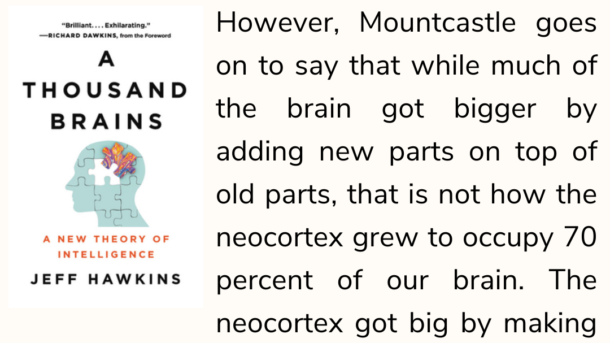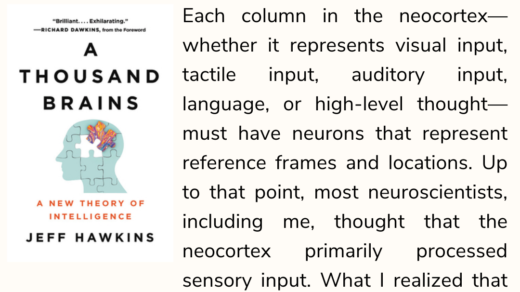What Mountcastle says in these first three sentences is that the brain grew large over evolutionary time by adding new brain parts on top of old brain parts. The older parts control more primitive behaviors while the newer parts create more sophisticated ones. Hopefully this sounds familiar, as I discussed this idea in the previous chapter. However, Mountcastle goes on to say that while much of the brain got bigger by adding new parts on top of old parts, that is not how the neocortex grew to occupy 70 percent of our brain. The neocortex got big by making many copies of the same thing: a basic circuit. Imagine watching a video of our brain evolving. The brain starts small. A new piece appears at one end, then another piece appears on top of that, and then another piece is appended on top of the previous pieces. At some point, millions of years ago, a new piece appears that we now call the neocortex. The neocortex starts small, but then grows larger, not by creating anything new, but by copying a basic circuit over and over. As the neocortex grows, it gets larger in area but not in thickness. Mountcastle argued that, although a human neocortex is much larger than a rat or dog neocortex, they are all made of the same element—we just have more copies of that element.
The passages from this book are gonna be rather technical and heavy (i need to reread them a few times), so why not start with a simple nice brief passage?
Our brain grew akin to some form of evolution, over time, it simply copied basic elements that were already there and just grew bigger. This allowed us to engage in more complex tasks. Its not like the inner parts of our brains are anything that unique in the animal kingdom, we just have more copies of it.



